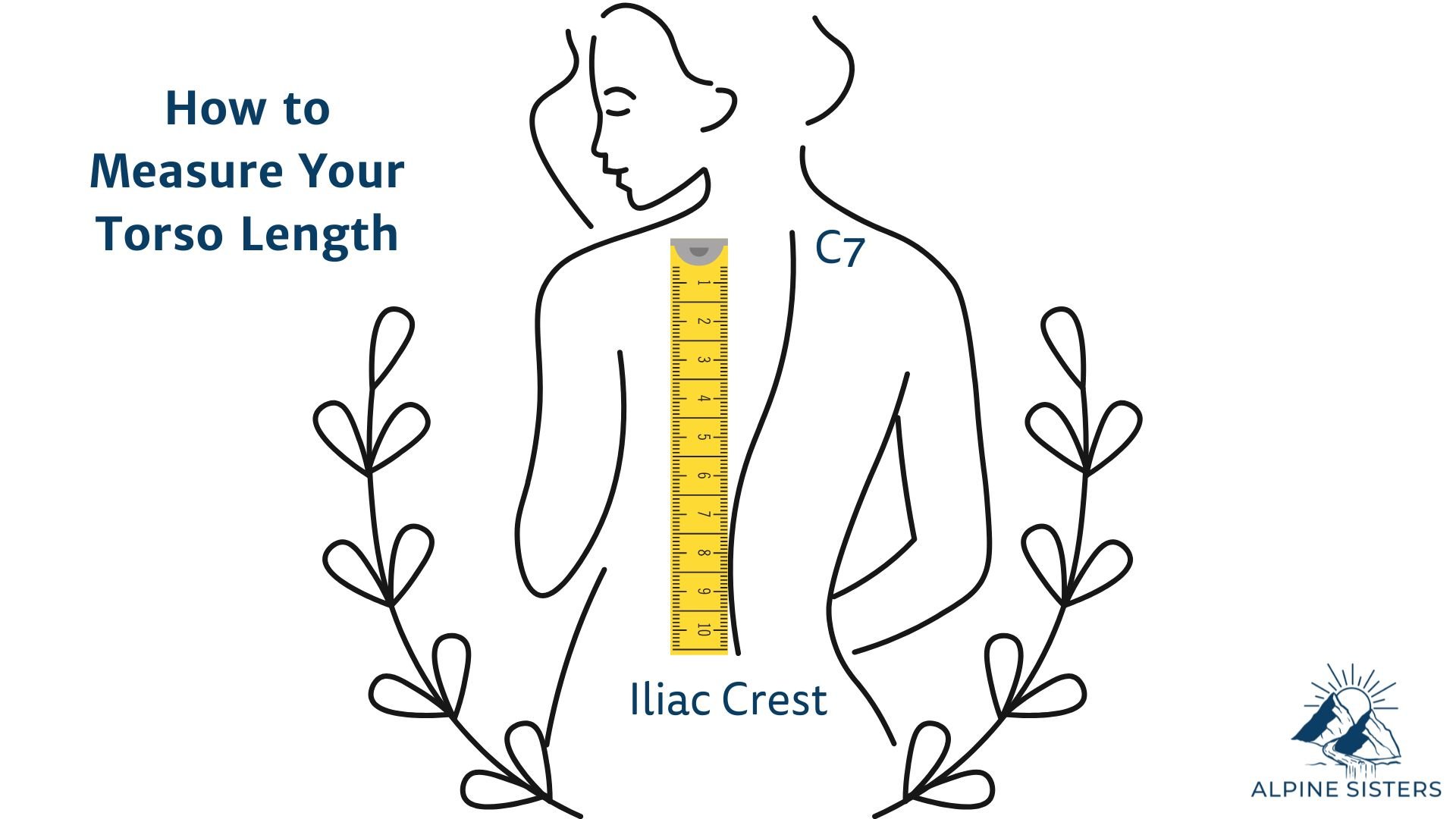Backpacking Essentials: Mastering Backpack Sizing and Fitting Techniques
Backpacking is not merely a hobby; it's a lifestyle that beckons adventurers to explore the great outdoors. However, the success and enjoyment of any backpacking trip hinge significantly on one often-overlooked factor: the backpack itself. Choosing the right backpack size and ensuring proper fit are paramount for ergonomic comfort and injury prevention. In this extensive guide, we delve into the intricacies of backpack sizing, fitting techniques, and weight distribution strategies, equipping you with the knowledge to enhance your backpacking experience.
*Please be aware that by clicking on some links, you may contribute a small commission to us as an affiliate, which helps us continue providing valuable educational content for free! We appreciate your support, as it enables us to break down barriers and make outdoor education accessible to everyone. Rest assured that we only endorse gear that we personally love and would use ourselves. Thank you for being a part of our mission to empower outdoor enthusiasts worldwide!
Table of Contents
Anatomy of Backpack Sizing
When it comes to backpacking, understanding the intricacies of backpack sizing is paramount for a comfortable and enjoyable outdoor experience. At the heart of this understanding lies the measurement of torso length, a critical factor in selecting the right backpack size. Let's delve into the anatomy of backpack sizing to equip you with the knowledge needed to find your perfect fit.
Introduction to Torso Length Measurement
Torso length refers to the distance between two key anatomical landmarks: the iliac crest and the C7 vertebra. This measurement serves as the foundation for determining the appropriate size of your backpack.
The iliac crest is the prominent ridge located at the top of your hip bones. It serves as a crucial reference point for torso length measurement. To locate it, place your hands on your hips, thumbs pointing backward, and fingers pointing forward. The ridge you feel beneath your fingers marks the position of your iliac crest.
Next, we have the C7 vertebra, also known as the prominent vertebra. This vertebra is the most prominent bone that protrudes at the base of your neck when you tilt your head forward. Identifying the C7 vertebra is essential for accurate torso length measurement.
Detailed Instructions for Accurate Torso Length Measurement
Now that we've identified the key landmarks, let's proceed with the measurement process.
Stand upright in a relaxed posture, preferably with your back against a wall.
With a flexible tape measure, start by measuring the distance from the iliac crest to the C7 vertebra along the natural curvature of your spine. Ensure the tape measure is snug against your body but not overly tight.
Record the measurement in inches or centimeters. This measurement represents your torso length.
If you’re more visual, check out our YouTube video below.
Understanding Torso Length Ranges in Backpack Sizing
Backpacks are available in various sizes, typically categorized by torso length ranges. These ranges accommodate individuals with different body proportions, ensuring a customized fit for optimal comfort and performance on the trail.
It's essential to consult the manufacturer's sizing guide to determine which torso length range aligns with your measurement. Selecting the appropriate size ensures that the backpack's suspension system, including the shoulder straps and hip belt, aligns correctly with your body for optimal load distribution.
Importance of Selecting a Backpack Within Your Torso Length Range
Choosing a backpack that falls within your torso length range is crucial for several reasons. Firstly, it ensures proper weight distribution and load-bearing capabilities, reducing the risk of discomfort and fatigue during extended hikes. Additionally, a properly fitted backpack enhances stability and maneuverability on uneven terrain, promoting a safer outdoor experience.
Implications of an Ill-Fitting Backpack on Comfort and Spinal Health
An ill-fitting backpack can have detrimental effects on both comfort and spinal health. Excessive pressure on specific areas, such as the shoulders or lower back, can lead to discomfort, chafing, and even injury. Moreover, an improperly fitted backpack may cause spinal misalignment, exacerbating existing back issues and compromising overall posture.
By prioritizing accurate torso length measurement and selecting a backpack within the appropriate size range, you mitigate these risks, ensuring a comfortable and supportive fit that enhances rather than detracts from your backpacking adventures.
Mastering Backpack Fitting Techniques
As we transition from understanding the fundamentals of backpack sizing, it's essential to delve into the practical aspect of fitting a backpack. Achieving an optimal fit is key to enhancing comfort and distributing weight effectively while on the trail. In this section, we'll guide you through the step-by-step process of mastering backpack fitting techniques, ensuring a personalized and ergonomic fit for your outdoor adventures.
Fitting Essentials
Before diving into the specifics of individual components, it's crucial to prepare the backpack for fitting. Loading the backpack with weight simulates realistic trail conditions, allowing for accurate adjustments. Fitting with a loaded backpack ensures that adjustments account for the weight distribution, enhancing comfort and stability during actual use. It’s recommended to use about 20lbs or so to simulate this.
Here are the primary fitting components:
Hip Belt: The hip belt plays a pivotal role in weight distribution, transferring the bulk of the load to your hips rather than your shoulders.
Shoulder Straps: Shoulder straps should provide a snug fit without restricting movement or causing undue pressure. Distributing weight evenly across the shoulders prevents strain and discomfort during extended hikes.
Load Lifters: Load lifter straps aid in optimizing weight distribution by pulling the top of the backpack closer to your body.
Sternum Strap: The sternum strap enhances stability and balance by securing the shoulder straps and preventing them from slipping off your shoulders.
Fitting the Hip Belt
To begin fitting the hip belt, position the padding directly on your iliac crest—the prominent ridge at the top of your hip bones we talked about earlier. This ensures that the majority of the weight is transferred to your hips, alleviating strain on your shoulders. Tighten the hip belt securely, but not excessively, ensuring a comfortable and stable fit.
Adjust the tension of the hip belt according to your preferences and comfort level. Experiment with different tension settings until you find the optimal balance between support and freedom of movement.
Adjusting Shoulder Straps
Achieving a snug fit with the shoulder straps helps distribute weight evenly and prevents discomfort. Adjust the shoulder straps to ensure they lie flat against your shoulders without digging into your skin or causing pressure points.
Avoid over-tightening the shoulder straps, as this can restrict blood flow and lead to discomfort. Conversely, ensure they are not too loose, as this may result in the backpack sagging and pulling you backward.
Fine-Tuning Load Lifters
Load lifter straps play a crucial role in maintaining balance and stability, particularly when navigating challenging terrain. Position the load lifter straps at a comfortable angle, typically around 45 degrees from the backpack's shoulder straps.
Tighten the load lifter straps gradually, ensuring they pull the top of the backpack closer to your body without causing discomfort or restricting movement. Fine-tune the tension as needed to achieve optimal weight distribution and stability.
Optimizing the Sternum Strap
The sternum strap complements the shoulder straps by securing them in place and preventing slippage. Position the sternum strap across your chest at a comfortable height, ensuring it does not constrict your breathing or cause discomfort.
Adjust the tension of the sternum strap to achieve a snug fit without over-tightening. A properly adjusted sternum strap enhances stability and balance, allowing for a more comfortable and supported backpacking experience.
With these fitting techniques mastered, you'll be equipped to achieve an optimal fit tailored to your body's unique proportions and preferences. Remember to experiment with adjustments and fine-tune as needed to ensure maximum comfort and performance on the trail.
Practical Application and Recommendations
In this final section, we'll bridge theory with practice, providing actionable tips, troubleshooting advice, and recommendations to empower you in selecting the ideal backpack for your backpacking adventures. Let's dive into practical application and recommendations to enhance your journey to backpacking mastery.
Hands-On Practice
Mastering backpack fitting techniques requires hands-on practice and familiarity with real-world scenarios. Here's how you can hone your skills:
Step-by-Step Walkthrough for Fitting a Backpack: Follow our detailed guide for fitting a backpack, replicating the process in various environments and conditions. Practice adjusting straps, redistributing weight, and ensuring a comfortable fit that aligns with your body's unique contours.
Overcoming Common Fitting Challenges: Anticipate and address common fitting challenges with confidence and proficiency. Whether it's adjusting for fluctuating loads, accommodating different layers of clothing, or adapting to changing terrain, practice troubleshooting techniques to maintain comfort and stability on the trail.
Building Muscle Memory: Consistency is key to mastering backpack fitting techniques. By repeatedly adjusting straps and fine-tuning fit, you'll develop muscle memory that facilitates efficient adjustments on the trail. Cultivate this skill through regular practice sessions, reinforcing your ability to achieve an optimal fit in any situation.
Time to Do it Yourself
Mastering the art of backpack sizing and fitting is a transformative journey that elevates your backpacking adventures to new heights. By understanding the principles outlined in this comprehensive guide and implementing the techniques discussed, you can embark on trail excursions with confidence, comfort, and peace of mind. Remember, the perfect backpack is not merely a piece of gear—it's your trusted companion in the pursuit of outdoor exploration.
If you have measured your spine, and are ready to buy your own backpack, start shopping now.
Happy trails!
About the Author
As an avid backpacker with years of outdoor experience, Shannon combines a passion for adventure with expertise in gear selection and fitting techniques. Through practical insights and firsthand knowledge, she aims to empower fellow trail enthusiasts in mastering the art of backpack sizing and fitting for optimal comfort and performance.




